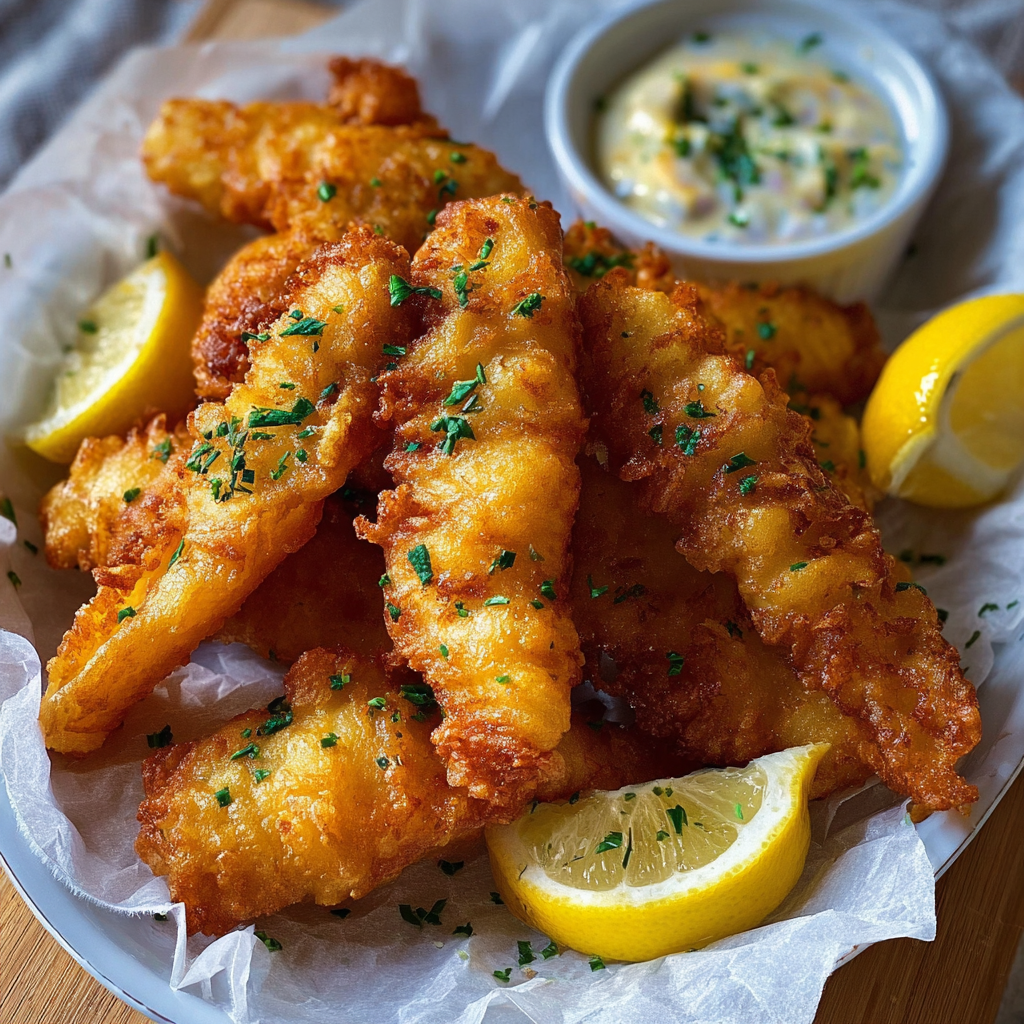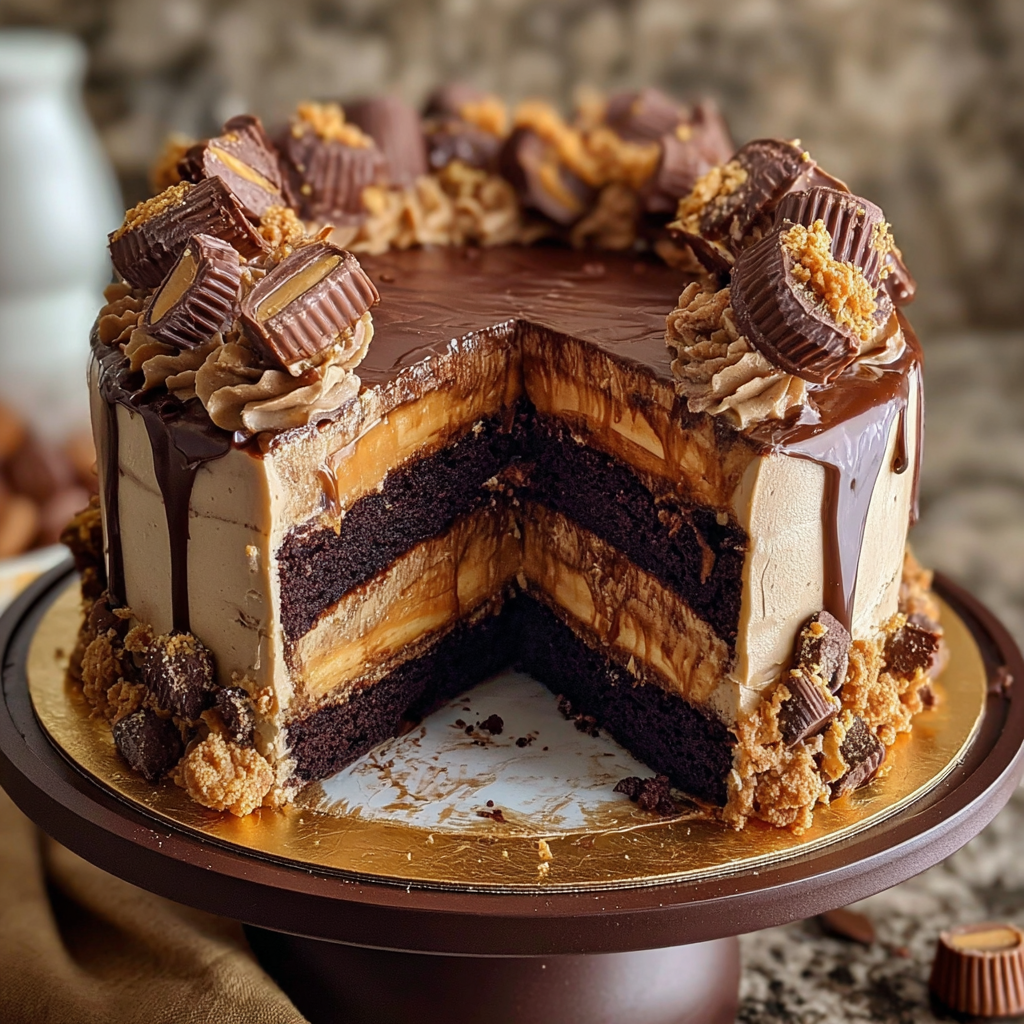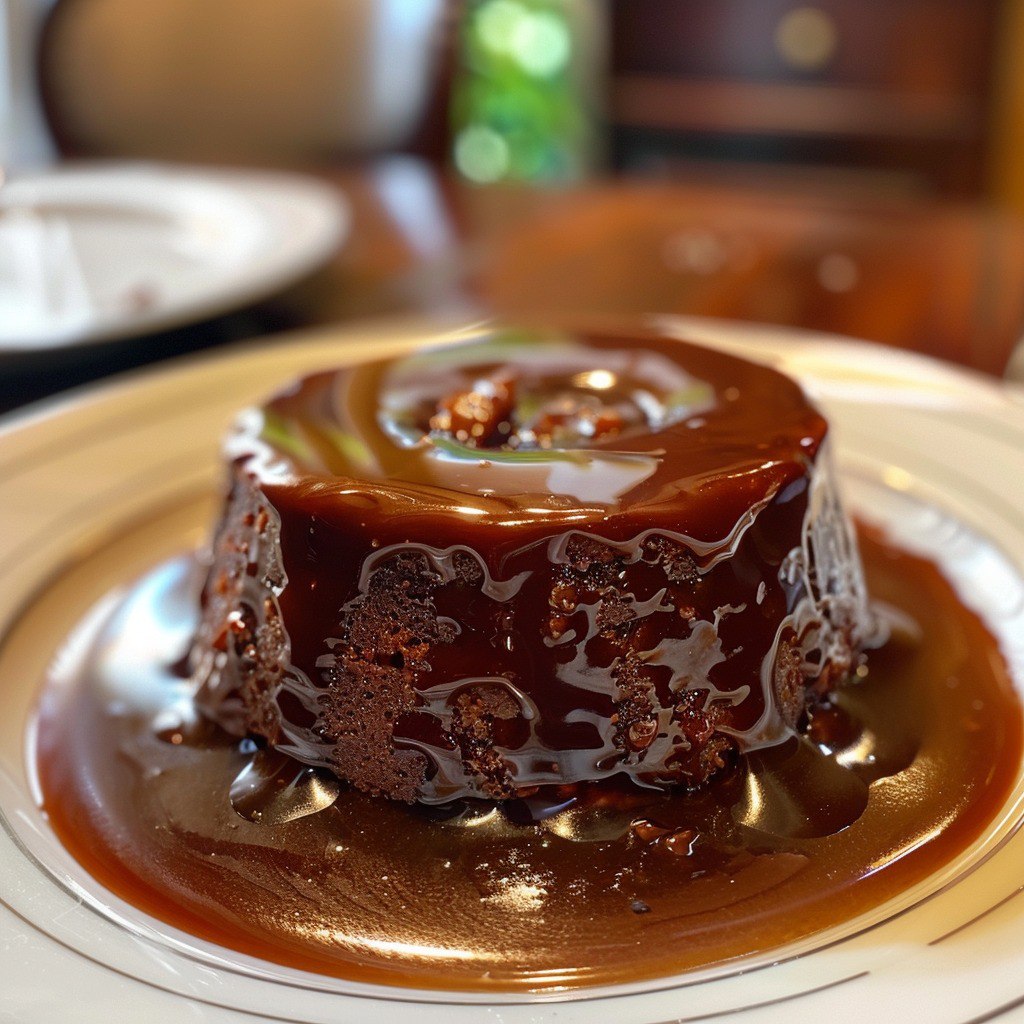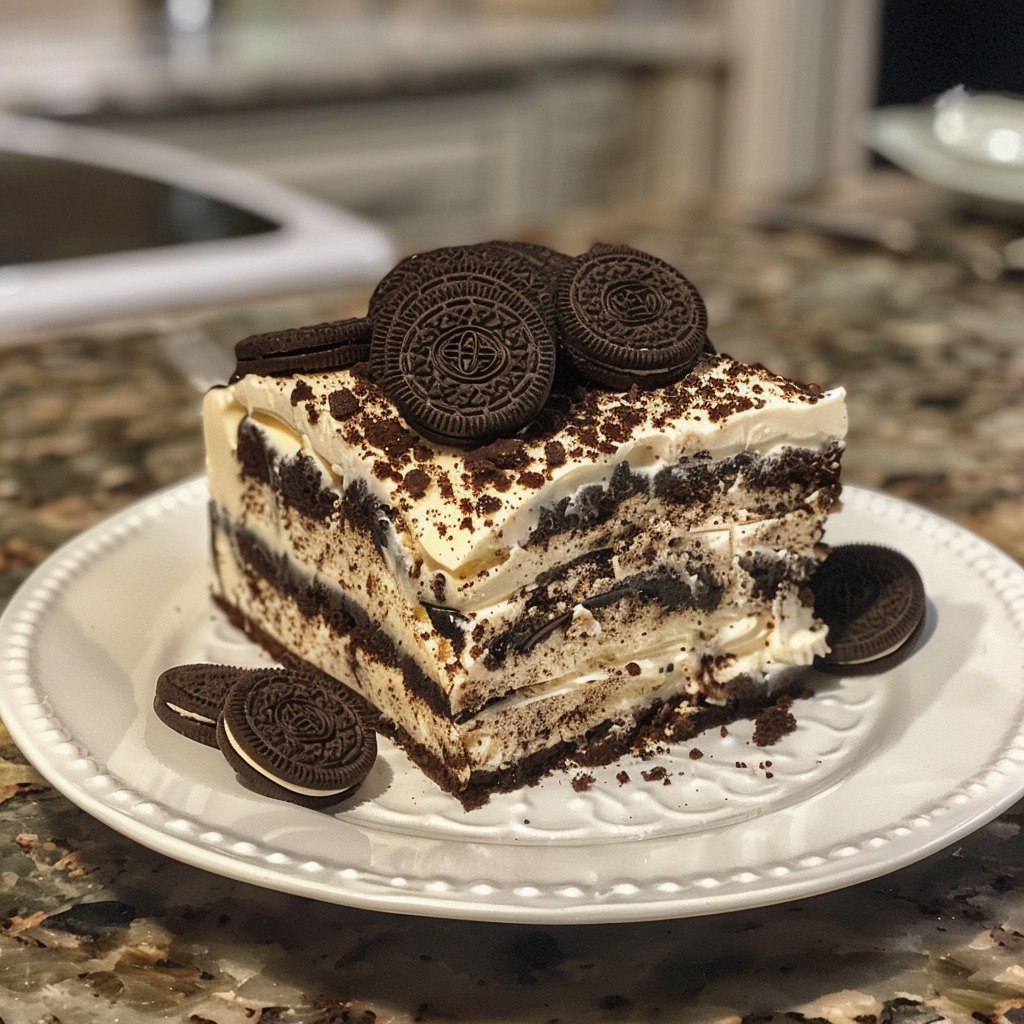Nothing beats the satisfying crunch of perfectly battered fish. Moreover, achieving that golden, restaurant-quality coating at home can seem challenging. However, with the right fish batter recipe, you can create crispy, flavorful fish that rivals any seafood restaurant. Additionally, this comprehensive guide will walk you through every step of making the most incredible fish batter you’ve ever tasted.
Furthermore, this recipe transforms ordinary fish fillets into extraordinary culinary experiences. In fact, the secret lies in the perfect combination of seasonings and technique. Therefore, whether you’re a beginner cook or seasoned chef, this guide ensures success every time.
Print
The Ultimate Guide to Unbelievable Fish Batter: Your Secret to Perfect Crispy Fish Every Time
- Total Time: 25 mins
- Yield: Serves 4
Description
This Unbelievable Fish Batter delivers a crispy, golden crust that locks in flavor and moisture, making it the ultimate coating for your favorite fish fillets. Whether you’re frying up cod, haddock, or tilapia, this easy batter recipe ensures perfect results every time.
Ingredients
- 1 cup all-purpose flour
- 1 teaspoon baking powder
- 1/2 teaspoon salt
- 1/4 teaspoon black pepper
- 1/2 teaspoon paprika
- 1/2 teaspoon garlic powder
- 1/2 teaspoon onion powder
- 1/2 cup cold water or club soda
- 1 tablespoon lemon juice
- 1 lb (450g) fish fillets (such as cod, haddock, or tilapia)
- Vegetable oil for frying
Instructions
- In a mixing bowl, whisk together flour, baking powder, salt, black pepper, paprika, garlic powder, and onion powder.
- Gradually add cold water or club soda and lemon juice to the dry ingredients, whisking until the batter is smooth and lump-free.
- Heat vegetable oil in a deep frying pan or pot to 350°F (175°C).
- Pat dry the fish fillets with paper towels to remove excess moisture.
- Dip each fish fillet into the batter, coating it evenly on all sides.
- Carefully place the battered fish fillets into the hot oil, one at a time, using tongs or a slotted spoon.
- Fry the fish fillets for 3–4 minutes per side, or until golden brown and fully cooked. Adjust timing based on fillet thickness.
- Remove the fish from the oil and place on a paper towel-lined plate to drain excess oil.
Notes
- Use club soda for a lighter, crispier texture.
- Ensure oil is at the correct temperature to avoid soggy batter.
- For extra crunch, double-dip the fish in the batter and fry twice.
- Serve immediately for the crispiest texture.
- You can bake the fish at 400°F (200°C) for 15–20 minutes as a healthier option.
- Prep Time: 15 mins
- Cook Time: 10 mins
- Category: Main Course
- Method: Frying
- Cuisine: American
Nutrition
- Serving Size: 1 fillet (approx. 113g)
- Calories: 310 kcal
- Sugar: 1 g
- Sodium: 380 mg
- Fat: 18 g
- Saturated Fat: 2.5 g
- Unsaturated Fat: 13.5 g
- Trans Fat: 0 g
- Carbohydrates: 17 g
- Fiber: 1 g
- Protein: 20 g
- Cholesterol: 55 mg
Keywords: fish batter recipe, crispy fish, fried fish fillets, seafood dinner, easy fish batter, golden fish coating, club soda fish batter
Why You’ll Love This Unbelievable Fish Batter
This exceptional fish batter stands out from ordinary recipes for several compelling reasons. Additionally, it’s designed to deliver consistent results while remaining incredibly simple to prepare.
Benefits That Make This Recipe Special
• It’s incredibly easy to make: Perfect for beginners with basic cooking skills • It’s versatile and adaptable: Works beautifully with various fish types • It’s crowd-pleasing: Appeals to both adults and children • It’s restaurant-quality: Delivers professional results at home • It’s budget-friendly: Uses common pantry ingredients • It’s time-efficient: Ready in just 25 minutes total
Moreover, this batter creates an impossibly light yet crispy coating. Furthermore, the seasoning blend provides depth without overwhelming the fish’s natural flavor. As a result, you’ll achieve that perfect balance of texture and taste every single time.
What Makes This Fish Batter Recipe Unique
Unlike heavy, greasy batters, this recipe uses club soda for extra lightness. Additionally, the carefully balanced spice blend enhances rather than masks the fish. Furthermore, the technique ensures even coating and prevents sogginess.
Specifically, the combination of paprika and garlic powder creates a subtle warmth. Meanwhile, the lemon juice adds brightness that complements any fish variety. Therefore, this batter works equally well with mild white fish or stronger-flavored options.
Essential Ingredients for Perfect Fish Batter
Creating exceptional fish batter starts with selecting quality ingredients. Moreover, each component serves a specific purpose in achieving that perfect crispy coating.
Dry Ingredients That Create Structure
The foundation begins with all-purpose flour, which provides structure and body. Additionally, baking powder acts as the secret weapon for achieving lightness. Furthermore, the salt enhances all other flavors while helping the batter adhere properly.
Similarly, black pepper adds a subtle heat that complements seafood beautifully. Meanwhile, paprika contributes both color and a mild smoky flavor. Subsequently, garlic powder and onion powder create depth without overpowering the fish.
Wet Ingredients for Texture and Flavor
Cold water or club soda creates the batter’s base liquid. However, club soda produces superior results due to its carbonation. Additionally, the bubbles create a lighter, airier texture that fries to perfection.
Furthermore, lemon juice serves multiple purposes in this recipe. Specifically, it adds brightness while helping tenderize the fish slightly. Moreover, the acidity helps create a more tender coating that stays crispy longer.
Choosing the Right Fish for Batter
The best fish varieties for battering include cod, haddock, and tilapia. Additionally, these white fish have mild flavors that pair perfectly with seasoned batter. Furthermore, their firm texture holds up well during the frying process.
However, you can also use halibut, sole, or flounder successfully. Moreover, each variety brings its own subtle characteristics to the final dish. Therefore, experiment with different types to discover your personal preference.
Step-by-Step Guide to Making Unbelievable Fish Batter
Creating perfect fish batter requires attention to detail and proper technique. Additionally, following these steps ensures consistent, restaurant-quality results every time.
Step 1: Preparation and Setup
Begin by gathering all ingredients and equipment before starting. Moreover, having everything ready streamlines the cooking process significantly. Additionally, prepare your workspace to handle both dry and wet ingredients efficiently.
First, pat the fish fillets completely dry with paper towels. Furthermore, removing excess moisture prevents the batter from sliding off during frying. Subsequently, season the fish lightly with salt and pepper if desired.
Meanwhile, set up your frying station with a deep pan or pot. Additionally, attach a candy thermometer to monitor oil temperature accurately. Furthermore, prepare a paper towel-lined plate for draining the finished fish.
Step 2: Creating the Perfect Batter Mix
Start by combining all dry ingredients in a large mixing bowl. Moreover, whisk them together thoroughly to ensure even distribution. Additionally, this step prevents lumps from forming in the final batter.
Subsequently, create a well in the center of the dry mixture. Furthermore, this technique helps incorporate liquids more smoothly. Therefore, add the cold water or club soda gradually while whisking continuously.
Next, add the lemon juice and whisk until the batter becomes completely smooth. However, avoid overmixing, which can develop gluten and create toughness. Additionally, the finished batter should have a consistency similar to heavy cream.
Step 3: Achieving Perfect Frying Temperature
Heat your oil to exactly 350°F (175°C) for optimal results. Moreover, maintaining this temperature ensures even cooking and proper browning. Additionally, use enough oil to completely submerge the fish pieces.
Furthermore, test the oil temperature with a small drop of batter. Specifically, it should sizzle immediately and rise to the surface quickly. However, if it browns too fast, reduce the heat slightly.
Meanwhile, avoid overcrowding the pan, which drops the oil temperature. Additionally, fry only 2-3 pieces at once for best results. Therefore, patience during this step ensures perfectly cooked fish every time.
Step 4: Mastering the Battering Technique
Dip each fish fillet into the batter, coating it completely. Moreover, allow excess batter to drip off briefly before frying. Additionally, this prevents the coating from becoming too thick or heavy.
Furthermore, use tongs or a slotted spoon to handle the battered fish safely. Specifically, lower each piece into the oil gently to avoid splashing. Subsequently, the fish should sizzle immediately upon contact with the hot oil.
Turn the fish carefully after 3-4 minutes of cooking. Additionally, the bottom should be golden brown before flipping. Furthermore, cook the second side for another 3-4 minutes until equally golden.

Pro Tips for the Best Fish Batter Results
Achieving consistently excellent fish batter requires mastering several professional techniques. Moreover, these insider tips elevate your results from good to extraordinary.
Temperature Control Secrets
Maintaining proper oil temperature throughout cooking is absolutely crucial. Additionally, invest in a reliable thermometer for consistent results. Furthermore, adjust heat as needed to keep temperature steady at 350°F.
Moreover, allow oil to return to temperature between batches. Specifically, wait 1-2 minutes before adding the next batch of fish. Therefore, each piece cooks evenly and achieves optimal crispiness.
Batter Consistency Guidelines
The ideal batter consistency resembles thick cream or pancake batter. Additionally, it should coat the back of a spoon without being too thick. Furthermore, thin the batter with cold liquid if it becomes too heavy.
However, avoid making the batter too thin, which won’t adhere properly. Moreover, the coating should cling to the fish without dripping off excessively. Therefore, adjust consistency gradually until perfect.
Timing and Serving Recommendations
Serve the fish immediately after frying for maximum crispiness. Additionally, keeping it warm in a 200°F oven helps maintain texture briefly. However, avoid covering the fish, which creates steam and softens the coating.
Furthermore, prepare all accompaniments before you begin frying. Specifically, have tartar sauce, lemon wedges, and sides ready to serve. Therefore, the fish reaches the table at its absolute peak quality.
Common Mistakes to Avoid When Making Fish Batter
Even experienced cooks can make errors that compromise their fish batter results. Moreover, understanding these pitfalls helps you achieve success consistently.
Batter Preparation Errors
Overmixing the batter develops gluten, creating a tough coating. Additionally, mix ingredients just until combined to maintain tenderness. Furthermore, lumpy batter indicates insufficient initial whisking of dry ingredients.
Similarly, using warm liquids can make the batter heavy and dense. Moreover, cold liquids help create the desired light texture. Therefore, chill your water or club soda before mixing.
Frying Temperature Problems
Oil that’s too hot burns the outside before cooking the fish through. Additionally, oil that’s too cool creates greasy, soggy results. Furthermore, inconsistent temperature leads to uneven browning and texture.
Moreover, overcrowding the pan drops oil temperature significantly. Specifically, this results in greasy fish with poor texture. Therefore, fry in small batches for optimal results.
Fish Preparation Issues
Wet fish causes batter to slide off during cooking. Additionally, always pat fillets completely dry before battering. Furthermore, frozen fish must be thoroughly thawed and dried.
Similarly, fish that’s too thick cooks unevenly in standard frying time. Moreover, pound thick fillets to even thickness or adjust cooking time accordingly. Therefore, consistent thickness ensures even cooking throughout.
Variations and Customizations for Your Fish Batter
This versatile fish batter recipe adapts beautifully to various flavor preferences. Additionally, simple modifications create exciting new taste experiences while maintaining the core technique.
Spice Blend Variations
For a spicier version, add cayenne pepper or hot paprika. Moreover, start with 1/4 teaspoon and adjust to taste preferences. Additionally, chipotle powder creates a smoky heat that complements fish beautifully.
Furthermore, herb enthusiasts can incorporate dried dill or thyme. Specifically, these herbs pair exceptionally well with white fish varieties. However, use herbs sparingly to avoid overwhelming the delicate fish flavor.
International Flavor Profiles
Create an Asian-inspired version by adding ginger powder and sesame oil. Additionally, a pinch of five-spice powder creates intriguing complexity. Furthermore, serve with sweet and sour sauce instead of traditional tartar sauce.
Similarly, Mediterranean influences work beautifully with this base recipe. Moreover, add dried oregano and a touch of lemon zest to the batter. Therefore, serve with tzatziki sauce for an authentic Greek experience.
Dietary Adaptations
For gluten-free options, substitute rice flour or gluten-free flour blend. Additionally, ensure all seasonings are certified gluten-free. Furthermore, the technique remains identical with these substitutions.
Moreover, lighter versions can use sparkling water instead of club soda. Specifically, this reduces any subtle mineral flavors while maintaining carbonation benefits. Therefore, the result is equally crispy with a cleaner taste.
Serving Suggestions and Pairings
Perfectly prepared fish batter deserves equally thoughtful accompaniments. Moreover, the right sides and sauces enhance the overall dining experience significantly.
Classic Accompaniments
Traditional tartar sauce remains the gold standard pairing. Additionally, homemade versions surpass store-bought options considerably. Furthermore, creamy coleslaw provides cooling contrast to the warm, crispy fish.
Similarly, crispy french fries create the classic fish and chips experience. Moreover, mushy peas add authentic British pub character. Therefore, these traditional combinations never disappoint.
Modern Serving Ideas
Serve the battered fish in soft tacos with fresh slaw. Additionally, add avocado and lime crema for contemporary flair. Furthermore, this presentation appeals to younger diners particularly well.
Moreover, over mixed greens, the fish creates an elevated salad. Specifically, add cherry tomatoes and cucumber for freshness. Subsequently, drizzle with lemon vinaigrette to complete the dish.
Wine and Beverage Pairings
Crisp white wines complement fried fish beautifully. Additionally, Sauvignon Blanc or Pinot Grigio provide perfect acidity balance. Furthermore, the wine’s brightness cuts through the rich, fried coating.
Similarly, cold beer offers classic pairing appeal. Moreover, light lagers or wheat beers work exceptionally well. Therefore, these beverages enhance rather than compete with the fish flavors.
Storage and Reheating Tips
Proper storage techniques help maintain your fish batter quality for future meals. Additionally, knowing reheating methods preserves texture and flavor optimally.
Short-Term Storage Solutions
Refrigerate leftover battered fish within two hours of cooking. Moreover, place pieces on a wire rack over a baking sheet. Additionally, this prevents the bottom from becoming soggy during storage.
Furthermore, consume refrigerated fish within 2-3 days for best quality. Specifically, the coating remains relatively crispy during this timeframe. However, texture deteriorates significantly after this period.
Reheating for Best Results
Oven reheating produces superior results compared to microwaving. Additionally, preheat the oven to 375°F for optimal temperature. Furthermore, place fish on a wire rack for even heat circulation.
Moreover, reheat for 10-12 minutes until heated through completely. Specifically, the coating should become crispy again during this process. Therefore, avoid covering the fish, which creates unwanted steam.
Freezing Considerations
While possible, freezing significantly affects texture quality. Additionally, freeze pieces individually on a baking sheet first. Furthermore, transfer to freezer bags once solid to prevent sticking.
However, expect some texture loss after freezing and thawing. Moreover, the coating may become less crispy despite proper reheating. Therefore, fresh preparation yields superior results consistently.
Nutritional Benefits and Health Considerations
Understanding the nutritional aspects of fish batter helps make informed dietary choices. Moreover, fish provides excellent protein while the batter adds calories and carbohydrates.
Protein and Nutrient Content
Fish delivers high-quality complete protein essential for health. Additionally, white fish varieties are naturally low in calories and fat. Furthermore, they provide important vitamins and minerals including selenium and phosphorus.
Moreover, the batter adds carbohydrates for energy and satisfaction. Specifically, the flour provides B vitamins and iron. However, frying increases the overall calorie content significantly.
Healthier Preparation Options
Baking the battered fish reduces oil content considerably. Additionally, spray the coated fish with cooking oil before baking. Furthermore, bake at 400°F for 15-20 minutes until golden and cooked through.
Similarly, air frying creates crispy results with minimal oil. Moreover, this method reduces calories while maintaining excellent texture. Therefore, these alternatives suit health-conscious diners perfectly.
FAQs About Fish Batter
Understanding common questions about fish batter helps ensure successful results. Moreover, these answers address the most frequent concerns home cooks encounter.
Q: Can I make the batter ahead of time?
A: Fresh batter produces optimal results, but you can prepare it up to 2 hours ahead. Additionally, store it covered in the refrigerator until needed. However, you may need to whisk it again before use, as ingredients can separate over time.
Q: What’s the difference between using water and club soda?
A: Club soda creates a lighter, airier texture due to carbonation. Moreover, the bubbles help create a crispier coating when fried. Additionally, the mineral content can add subtle flavor enhancement to the finished batter.
Q: How do I know when the fish is fully cooked?
A: The fish reaches doneness when it flakes easily with a fork. Additionally, the internal temperature should reach 145°F for food safety. Furthermore, properly cooked fish appears opaque throughout rather than translucent.
Q: Can I use this batter for other foods?
A: Absolutely! This versatile batter works excellently for vegetables, chicken, or shrimp. Moreover, adjust cooking times based on the thickness and type of food. Additionally, vegetables typically require less cooking time than fish or meat.
Q: Why does my batter fall off during frying?
A: Wet fish is the most common cause of batter sliding off. Additionally, ensure fillets are completely dry before dipping. Furthermore, the oil temperature might be incorrect, so verify it’s exactly 350°F.
Q: How can I make the batter less greasy?
A: Maintain proper oil temperature throughout cooking for best results. Additionally, drain fried fish on paper towels immediately after cooking. Furthermore, avoid overcrowding the pan, which drops oil temperature and increases grease absorption.
Troubleshooting Common Fish Batter Problems
Even experienced cooks encounter challenges when making fish batter. Moreover, identifying solutions quickly helps salvage meals and improve future results.
Batter Consistency Issues
Thick, heavy batter often results from too little liquid or overmixing. Additionally, thin the mixture gradually with cold water or club soda. Furthermore, remix gently to maintain the desired light texture.
Conversely, thin batter won’t adhere properly to fish surfaces. Moreover, whisk in additional flour one tablespoon at a time. Subsequently, test the consistency before proceeding with battering the fish.
Cooking Temperature Problems
Burnt exteriors with raw interiors indicate excessively hot oil. Additionally, reduce heat and allow temperature to stabilize before continuing. Furthermore, consider pounding thicker fillets to ensure even cooking throughout.
Meanwhile, pale, greasy results suggest oil temperature is too low. Moreover, increase heat gradually while monitoring with a thermometer. Therefore, patience during temperature adjustment prevents waste and disappointment.
Advanced Techniques for Perfect Fish Batter
Mastering professional techniques elevates your fish batter from good to exceptional. Moreover, these advanced methods create restaurant-quality results consistently at home.
Double-Coating Method
Some chefs prefer coating fish twice for extra crispiness. Additionally, dip in batter, let excess drip off, then dip again briefly. Furthermore, this technique creates a thicker, more substantial coating.
However, avoid making the coating too thick, which can overwhelm the fish. Moreover, practice this technique to find your preferred thickness level. Therefore, start conservatively and increase coating as desired.
Temperature Staging Technique
Professional kitchens often use two oil temperatures for optimal results. Specifically, start frying at 325°F, then increase to 375°F for finishing. Additionally, this method cooks fish through while achieving maximum crispiness.
Furthermore, this technique works particularly well for thicker fillets. Moreover, the lower initial temperature prevents burning while ensuring thorough cooking. Subsequently, the higher finishing temperature creates the desired golden crust.
Conclusion
This comprehensive guide to unbelievable fish batter provides everything needed for success. Moreover, the combination of proper technique, quality ingredients, and attention to detail guarantees exceptional results every time.
Furthermore, remember that practice makes perfect with any cooking technique. Additionally, don’t be discouraged if your first attempts aren’t restaurant-perfect. However, following these detailed instructions significantly improves your chances of immediate success.




